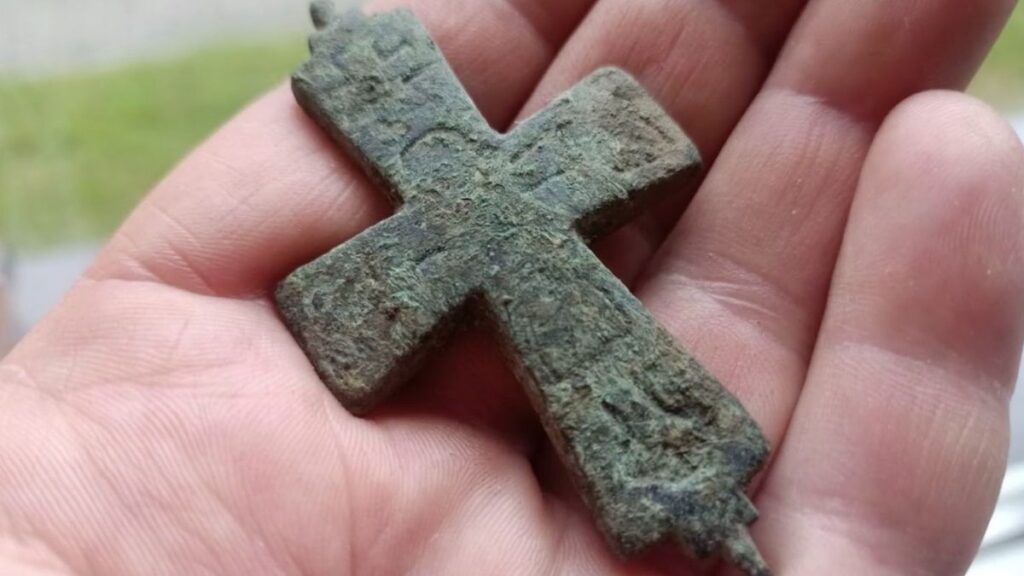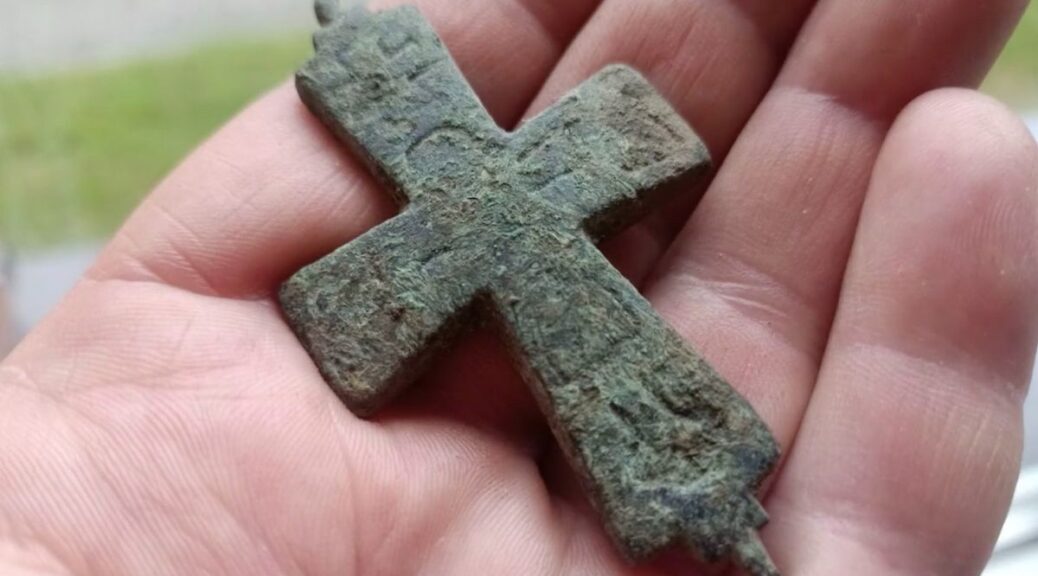Rare cross-shaped reliquary unearthed from medieval knight’s home in Poland
While surveying the remnants of a medieval knight’s residence in Poland, archaeologists unearthed a plethora of artifacts, including a cross-shaped reliquary.

Archaeologists originally discovered the knight’s manor in June on the outskirts of Widów, a village in southern Poland.
An initial survey of the site revealed the remnants of a wooden tower that was destroyed but once sat on top of a hill sometime between the 13th and 15th centuries, according to Science in Poland, a news site that is a collaboration between reporters and the Polish government.
Further investigation of the archaeological site revealed the cross-shaped medallion, which is known as an enkolpion (also spelled encolpion and engolpion), which translates to “on the breast” in ancient Greek.
Made of copper alloy, the religious piece was an important symbol worn by Christians on their chests during medieval times and often contained quotations or illustrations from the Christian Bible, according to Science in Poland.
While researchers aren’t sure of the knight’s identity, they do know that enkolpia were part of the vestments, or garments and articles worn by Eastern Orthodox and Eastern Catholic bishops, according to Science in Poland.
In addition to the cross, archaeologists found other military-related items, such as three iron stirrups, part of a horseshoe, crossbow arrows, remnants of cordage, or ropes.
They also unearthed a number of artifacts, some made of clay and some made of iron, that were part of the former residence, including a stove, door fixtures, a padlock and key, nails, hooks, and staples. Several silver coins and the remains of a belt were also found.
The former residence is part of a larger settlement that also contains the remains of a wooden church and a cemetery.
Archaeologists have been exploring the site since the mid-19th century, but much of the outpost has been “destroyed by agricultural activity,” according to Science in Poland.
